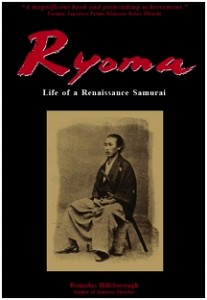The assassination of Sakamoto Ryoma is shrouded in mystery. Conspiracy theories abound, including that Ryoma’s friends from Satsuma eliminated him for having foiled their plans for a violent revolution. But there has never been any hard evidence uncovered that Satsuma was involved or in any way complicit in Ryoma’s assassination. Rather, the historical consensus, while not conclusive, is that he was cut down by swordsmen of the Mimawarigumi (Patrolling Corps), a security force in Kyoto in service of the shogun’s government. Ryoma’s alleged assassins, then, were die-hard loyalists of the shogunate who blamed him for their imminent fall, based on his eight-point plan to avoid civil war.
Ryoma’s plan called for the shogun to abdicate and restore Imperial rule toward the establishment of two legislative houses of government, an upper and a lower, to be filled by able men, including feudal lords, nobles of the Imperial Court, and the Japanese people at large, under the Emperor and accountable to public opinion. The last shogun, Tokugawa Yoshinobu, accepted Ryoma’s peace plan, which was submitted to him through the influential daimyo of Tosa, Ryoma’s home domain. On the thirteenth day of the Tenth Month of the year corresponding to 1867, Yoshinobu announced his intention to abdicate and restore Imperial rule. Ryoma was assassinated about a month later on his thirty-third birthday, the fifteenth day of the Eleventh Month – about one month before the so-called “Restoration of Imperial Rule of Old,” a coup d’etat which took place on the ninth day of the Twelfth Month (January 3, 1868).
Ryoma’s plan, which Restoration historian Hirao Michio calls “the most noteworthy document in Restoration history,” embodied Ryoma’s second great contribution to the Meiji Restoration, following his brokering of a military alliance against the shogunate between two erstwhile enemies, Satsuma and Choshu, at the beginning of the previous year (1866). Ryoma’s plan served as the blueprint for the Charter Oath of the new Meiji government, promulgated by the Emperor in the Third Month of 1868.
I wrote in detail about Sakamoto Ryoma’s indispensible role in the Meiji Restoration in the novel Ryoma: Life of a Renaissance Samurai, and in the historical narrative Samurai Revolution.
[This photo of Sakamoto Ryoma, taken shortly before his assassination, is used in my book Samurai Tales, courtesy of Tokyo Ryoma-kai.]
For updates about new content, connect with me on Facebook.

Ryoma: Life of a Renaissance Samurai, the only biographical novel about Sakamoto Ryoma in English, is available on Amazon.com.
